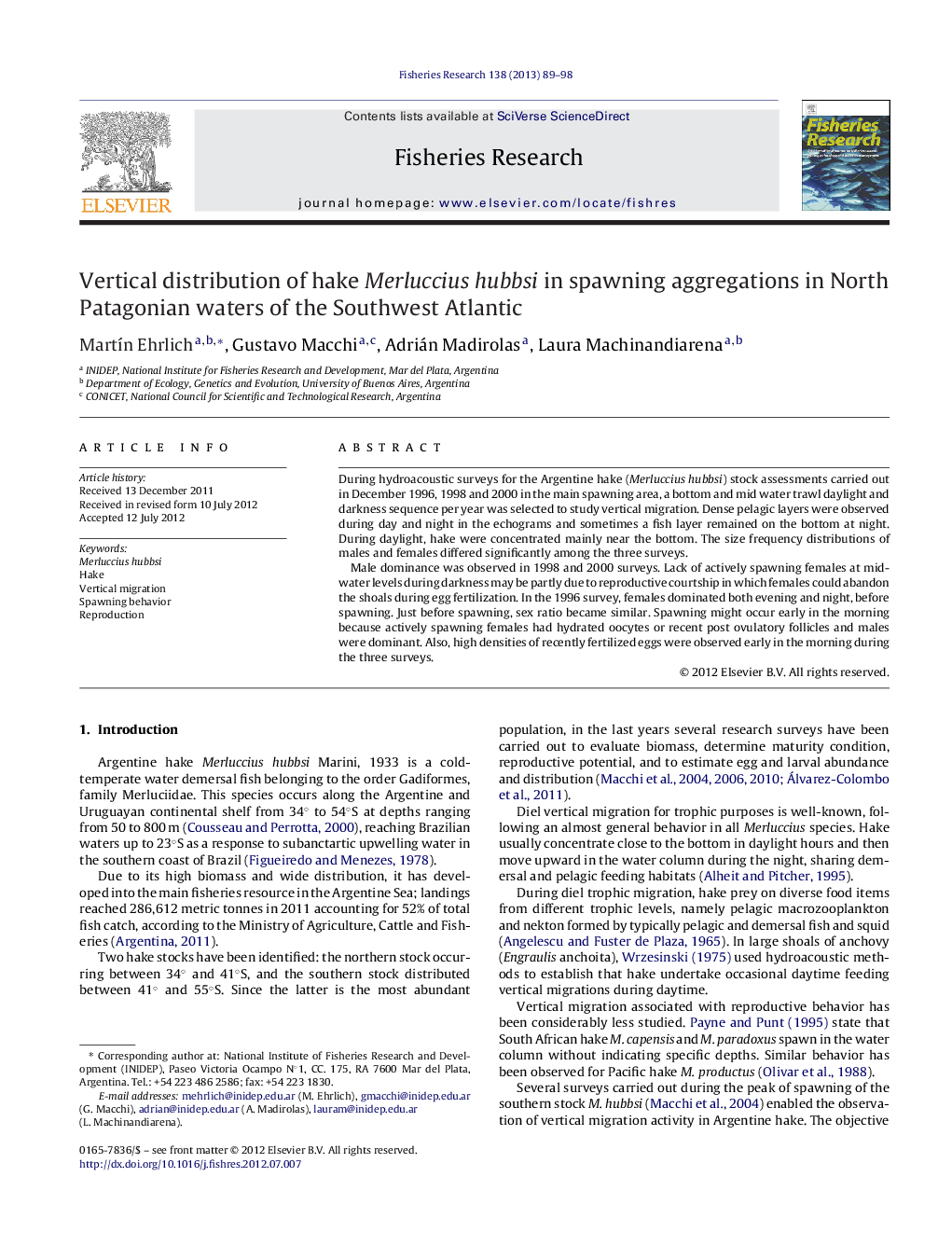| Article ID | Journal | Published Year | Pages | File Type |
|---|---|---|---|---|
| 4543222 | Fisheries Research | 2013 | 10 Pages |
During hydroacoustic surveys for the Argentine hake (Merluccius hubbsi) stock assessments carried out in December 1996, 1998 and 2000 in the main spawning area, a bottom and mid water trawl daylight and darkness sequence per year was selected to study vertical migration. Dense pelagic layers were observed during day and night in the echograms and sometimes a fish layer remained on the bottom at night. During daylight, hake were concentrated mainly near the bottom. The size frequency distributions of males and females differed significantly among the three surveys.Male dominance was observed in 1998 and 2000 surveys. Lack of actively spawning females at mid-water levels during darkness may be partly due to reproductive courtship in which females could abandon the shoals during egg fertilization. In the 1996 survey, females dominated both evening and night, before spawning. Just before spawning, sex ratio became similar. Spawning might occur early in the morning because actively spawning females had hydrated oocytes or recent post ovulatory follicles and males were dominant. Also, high densities of recently fertilized eggs were observed early in the morning during the three surveys.
► We study spawning behaviour of hake (Merluccius hubbsi). ► Hake perform daily vertical migrations during spawning. ► We visualized male segregation in hours of darkness.
